#aos sí
Explore tagged Tumblr posts
Text


Part 1 of Shae and Maeve's routes is just two short weeks away! 🌿🐦⬛ Are you excited?
🍃 Wishlist on Steam 🍂 Follow on Itch
#the good people#na daoine maithe#visual novel#otome#dating sim#friend sim#interactive fiction#amare game#irish mythology#fairy#aes sidhe#aos sí
142 notes
·
View notes
Text
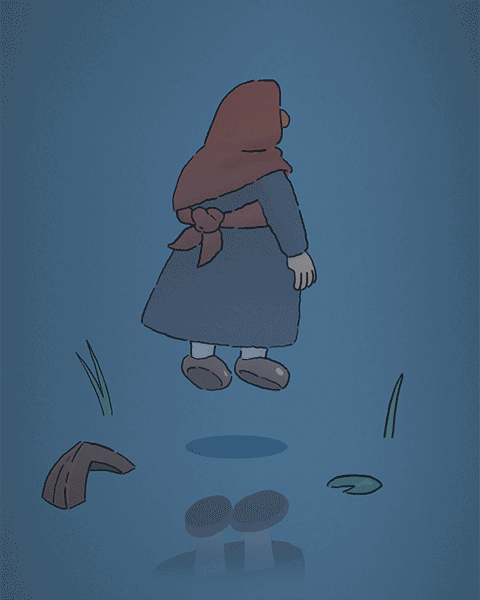
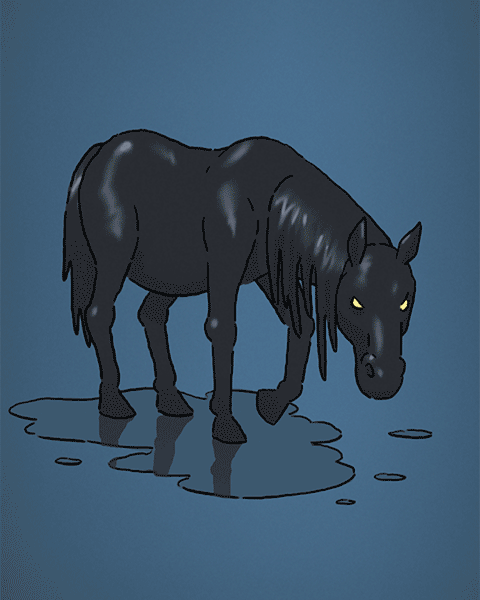

Some more fairies from Irish folklore for St. Patrick's Day.
The Bean Sí (or Banshee), Kelpie and Sluagh (Army of the Dead).
#art#digital art#artwork#character design#cartoon#fantasy#2d animation#animation#irish#irish art#irish artist#irish folklore#folklore#irish mythology#mythical creatures#folklore creature#ghost#ghosts#spirit#spirits#fairy#fairies#fae#fae folk#aos sí#wee folk#st. patrick's day#st patrick's day
41 notes
·
View notes
Text
Aos Sí species flag
Pt: Aos Sí species flag :End Pt




Species flag for Aos Sí, also known as Sidhe, a traditional Irish fairy / fae / Elf.
Flag is a mash up of @eldrorian and @scr-ppup species flags since I quite liked both.
Mentions / Tags: @seasulfur, @specieschive, @alterhumanflags, @radiomogai

Banner transcript: This term was made by an Endogenic. Anyone can use it however (So don't repost or recoin) :End Transcript


Main flag id: a flag made of fifteen horizontal stripes. the second, third, seventh, ninth, thirteenth, and fourteenth are scalloped; the outer two point outwards and the rest point inwards. the fifth and eleventh stripes are thin. from the top down, they are light yellowish brown, coffee brown, faded brown, very light brown, orange brown, dark green, brownish grey, dark reddish brown, then reversed. In the center is a nude tanned figure with warm brown hair. Around the figure is dark green sparkles. :End Id
Plain flag id: a flag made of fifteen horizontal stripes. the second, third, seventh, ninth, thirteenth, and fourteenth are scalloped; the outer two point outwards and the rest point inwards. the fifth and eleventh stripes are thin. from the top down, they are light yellowish brown, coffee brown, faded brown, very light brown, orange brown, dark green, brownish grey, dark reddish brown, then reversed. :End Id
Alt flag id: a flag made of fifteen horizontal stripes. the second, third, seventh, ninth, thirteenth, and fourteenth are scalloped; the outer two point outwards and the rest point inwards. the fifth and eleventh stripes are thin. from the top down, they are light yellowish brown, coffee brown, faded brown, very light brown, orange brown, dark green, brownish grey, dark reddish brown, then reversed. In the center is a brownish red fairy figure with butterfly with dull yellow wings and a thin brown outline. :End Id
#like sleep like death. you wake up again.#alterhuman#nonhuman#liom term#otherkin#alterhuman coining#species#Aos Sí#Sidhe#Aos Sí species flag#Aos si#Aos si species flag#Sidhe species flag#Aos si flag#Aos Sí flag#Sidhe flag#Nonhuman term#Nonhuman flag#Species flag#flag coining#flag making#Liom flag#Mogai flag#mogai flag#liom coining#mogai coining#coining#coining post#liom flag
23 notes
·
View notes
Text

#my art#watercolor#fairy#faery#faerycore#fae#fae folk#fairycore#fairy art#faerie#fae art#aos sí#sídhe fae
12 notes
·
View notes
Text

Fades i follets.
#art#pintura#fada#fades#fadenc#follet#follets#Gent Blanca#Gent Clara#Gent Petita#Gent Menuda#Aos Sí#Aes sídhe#Daoine sith#mite#mitologia#mitologia celta#mitologia europea
7 notes
·
View notes
Text
Beltane & May New Moon Ritual Script - 2024
Here's the script I put together for my coven's combined Beltane and New Moon ritual that I'm leading this weekend! There were some scheduling issues with the UU Church we meet at and this date was the only one that really worked, so we decided to combine both into one since they're both close to the date and have similar correspondences! If you're using the script, please tag me in it!
DO NOT INTERACT: TE/RFS, TE/HMS, SW/ERFS, TRAN/SMEDS, TRUS/CUM, TRANSPHOBIC, HOMOPHOBIC, EXCLUSIONISTS, CONSERVATIVE, NAZI, TRADWIVES, ANTI-BLM, ANTI-ASIAN, XENOPHOBIC, ABLEIST, ANTI-POP CULTURE PAGANISM

Meditation
Close your eyes and take a deep breath. Feel the air come in through your nose and out through your mouth. Take a moment to center yourself.
It’s a warm spring afternoon. The sky is cloudless as the Sun shines above, illuminating the prairie you stand in. The earth feels warm and tender underneath your bare feet. Wiggle your toes in the grass and feel the wildflowers in various colors tickle your toes and ankles. The fresh breeze smells of roses and honeysuckle, and birds chirp in nearby shrubs.
You spot a circle of people partaking in a dance before you. Colorful dresses and tunics flow in the wind, and flower crowns of daisies and daffodils sit on their heads. They cheer and sing, their voices floating on the wind. As you approach, those nearest you smile kindly and open their arms to allow you to join in. You enter and hold their hands, quickly feeling joy and warmth. You turn with them, the energy transferring from hand to hand.
Your hands release at the height of the energy, and you each dance independently. You use all the power you gathered to dance. Shaking your arms and legs, headbanging, spinning around, whatever brings you the most joy. You dance and dance until you’re worn out, then lie down in the grass and stare at the sky.
You regain your breath, breathing in and out deeply. As the Sun begins to set, the sky has turned from bright blue to shades of pink, purple, and orange. The Sun God starts to depart, taking the youthful energy of the day with Him. The Moon Goddess now enters, bringing the serenity of the night sky and stars. The people you danced with under the Sun lie on the ground with you, softly humming a hymn to welcome Her presence.
The Moon in Her New phase doesn’t shine as brightly as She does during her Full phase. Instead, she offers just a slice of light, letting the constellations and other celestial bodies take their time in the spotlight. Despite Her hidden figure, you can still feel Her energy, a soft feeling of abundance, protection, and love.
As you lie in the grass, think about what you wish to achieve in the coming weeks. What will be the best way to reach them, and what reward will lie in the end? The Moon will grant your wish as long as you put in the effort to achieve it. Don’t forget that you have the power to succeed, and She offers her assistance.
You gently close your eyes as you lie in the grass after setting your intentions. It is time for rest and recovery after a long day with the God and Goddess. You are safe from all danger, protected by those Above and Below. You drift off into a reverie, awaiting what the next day brings.
As we end this meditation, center yourself and take another deep breath. Feel your feet ground you as you return to this plane. Once you are ready, slowly open your eyes.
Chant & Calling the Quarters
We’ll sing “We Are a Circle” now. Feel free to stand, but don’t feel pressured to.
ALL: We are a circle within a circle, with no beginning and never-ending. (x3)
Form a circle deosil around the group with a wand (x1) to the pace of the chant.
Now, to call the quarters.
East/Air Quarter Caller: Guardians of the East, we call upon you to watch over the rights of our Kindred. Powers of knowledge and wisdom, guided by Air, we ask that you keep watch over us tonight within this circle. Let all who enter the circle under your guidance do so in Perfect Love and Perfect Trust. Hail and welcome!
Light the yellow candle.
ALL: Hail and welcome.
South/Fire Quarter Caller: Guardians of the South, we call upon you to watch over the rights of our Kindred. Powers of energy and will, guided by Fire, we ask that you keep watch over us tonight within this circle. Let all who enter the circle under your guidance do so in Perfect Love and Perfect Trust. Hail and welcome!
Light the red candle.
ALL: Hail and welcome.
West/Water Quarter Caller: Guardians of the West, we call upon you to watch over the rights of our Kindred. Powers of passion and emotion, guided by Water, we ask that you keep watch over us tonight within this circle. Let all who enter the circle under your guidance do so in Perfect Love and Perfect Trust. Hail and welcome!
Light the blue candle.
ALL: Hail and welcome.
North/Earth Quarter Caller: Guardians of the North, we call upon you to watch over the rights of our Kindred. Powers of endurance and strength, guided by Earth, we ask that you keep watch over us tonight within this circle. Let all who enter the circle under your guidance do so in Perfect Love and Perfect Trust. Hail and welcome!
Light the green candle.
ALL: Hail and welcome.
Center/Spirit Quarter Caller: Guardians of Above and Below, we call upon you to watch over the rights of our Kindred. Powers of grounding and balance, guided by Spirit, we ask that you keep watch over us tonight within this circle. Let all who enter the circle under your guidance do so in Perfect Love and Perfect Trust. Hail and welcome!
Light the white candle.
ALL: Hail and welcome.
The Story of Beltane & the May New Moon
Beltane, also known as May Day, Walpurgis Night, and Floralia, marks the halfway point between the Spring Equinox and Summer Solstice. The name and festival Beltane are Gaelic in origin, which comes from the words “Bel,” meaning “bright,” and “Tene,” meaning fire, along with the God Belenus, who represents Fire. Beltane is considered the oldest holiday in Gaelic tradition, dating back to at least the 10th century.
In modern Pagan practices, Beltane represents the Sacred Union between the Mother Goddess and Horned God, conceiving the Harvest Child. The phallic maypole and yonic wreath of flowers and ribbons represent their Rite. As such, Beltane has become a time for fertility and sexuality, and it’s also associated with creativity and love. Bonfires represent fertility, protection, and the longer days of summer, and crops, beauty, and creativity continue to grow.
Beltane is also associated with fairies of Gaelic lore, specifically the aos sí. The veil is thinnest at this time, much like at Samhain, allowing them to pass through. The aos sí were appeased with offerings of food and drink to prevent their troublesome natures and in hopes that they would grant wishes.
Along with Beltane, we also celebrate the New Moon of May tonight. The New Moon is a time for setting intentions, manifestations, and new beginnings. It’s the beginning of the lunar cycle, where the moon is absent from the sky, and the stars shine brighter. The Moon’s energy is at one of Her highest, and it’s the perfect time for spellwork.
The May New Moon is in Taurus, representing creativity, sensuality, and abundance. These values align perfectly with Beltane, creating the perfect storm for intentions in these realms. It’s time to focus on achieving long-lasting results, especially those concerning money. However, the Earth element of Taurus reminds us to stay grounded and practical.
With Beltane and the Taurus New Moon coinciding near each other, the energy is high, promoting growth both in nature and within you. Take this time to focus on the pleasures in life and the abundance around you.
Cone of Power
Now, for the Cone of Power. Stand if you’re able, with hands linked. Left hand under, right hand over. As we chant, visualize the energy swirling around us and channeling into the sky.
ALL: Goddess and God
Moon and Sun
We link hands
And become One
Repeat louder & faster until the energy is built, then call release.
The Maypole Dance
((AUTHOR'S NOTE: I specifically wrote this section to accompany the song "Bard Dance" from the Baldur's Gate 3 soundtrack and this dance pattern. You do not have to use this same source material, and I encourage you to give the ritual your own spin! I'm simply copying/pasting exactly how my script is written.))
As I mentioned earlier, dancing around the Maypole is a Beltane tradition that dates back to before the Middle Ages in Europe, and we’ll be bringing that tradition to life today! Everyone grab a ribbon from the Maypole, and I’ll get my metronome set up.
Set the metronome app for 112 BPM and wait until everyone has a ribbon.
We’re going to split into two groups, 1 and 2.
Count out groups 1 and 2 (every other person) and start the metronome.
This is the tempo we’ll be using for the dance, in counts of four: four beats per measure and four measures for each dance phase. I’ll count it out like this as we dance.
Count "1 2 3 4 / 2 2 3 4 / 3 2 3 4 / 4 2 3 4" along to the tempo.
For the dancing, group 1 will walk to the pole for two measures and then walk back out for two measures.
Give an example with measure counting.
Group 2 will now do the same.
Give an example with measure counting.
Then, we turn clockwise for four measures and counterclockwise for four. And then the dance repeats! Do we want to try it without music and then start with the music?
(IF TRYING WITHOUT MUSIC FIRST: Walk the group through one cycle of the dance, then play Bard Dance on Spotify for the full run time. Count out the measures during the dance.)
(IF STARTING WITH MUSIC: Set Bard Dance on Spotify and play/dance for the full run time. Count out the measures during the dance.)
Simple Feast
Take a moment to ground yourself after dancing, and take the time to think about how you engaged with your fellow dancers. Now is also a perfect time for refreshments, our cakes and ale! We have unleaded, ________________ provided by ________________, and leaded, ________________ provided by ________________. We also have ________________ for cakes, provided by ________________.
Pass around wafers, cups, and drinks.
May you never hunger.
ALL: May you never hunger.
May you never thirst.
ALL: May you never thirst.
Intentions & Bonfire
As this is the New Moon, we’ll set intentions, but this time on ribbons for a Beltane twist! If anyone would like a copy, I have a guide to ribbon colors and their meanings. Cut yourself a ribbon that connects to your intention for the coming weeks. ((AUTHOR'S NOTE: Ribbon color guide can be found here!))
Allow time for people to get/cut ribbons and grab pens.
Feel the ribbon in your hands. Think of what the color means to you and your goals for this lunar cycle phase. Imagine the ribbon tightly wound around a physical representation of your intention, a present of joy and success ready to be opened. When you're ready, write your intention on the ribbon and hold onto it for now.
Light the bonfire.
Bonfires are another Beltane tradition used as a method of protection and purification. Historically, Gaelic people walked livestock between two bonfires and sprinkled ashes over crops. The Fire element is also associated with new beginnings and transformation, which makes it the perfect method to activate intentions! As you toss your ribbon into the fire, visualize its Sacred power bringing your intention to life!
Let everyone toss ribbons into the bonfire.
Dismissing the Quarters & Farewell
Now, to wrap up and thank the quarters.
North/Earth Quarter Caller: Guardians of the North, powers of endurance and strength, guided by Earth, we thank you for watching over the rights of our Kindred. May you be forever blessed. Hail and farewell!
Extinguish the green candle.
ALL: Hail and farewell.
West/Water Quarter Caller: Guardians of the West, powers of passion and emotion, guided by Water, we thank you for watching over the rights of our Kindred. May you be forever blessed. Hail and farewell!
Extinguish the blue candle.
ALL: Hail and farewell.
South/Fire Quarter Caller: Guardians of the South, powers of energy and will, guided by Fire, we thank you for watching over the rights of our Kindred. May you be forever blessed. Hail and farewell!
Extinguish the red candle.
ALL: Hail and farewell.
East/Air Quarter Caller: Guardians of the East, powers of knowledge and wisdom, guided by Air, we thank you for watching over the rights of our Kindred. May you be forever blessed. Hail and farewell!
Extinguish the yellow candle.
ALL: Hail and farewell.
Center/Spirit Quarter Caller: Guardians of Above and Below, powers of grounding and balance, guided by Spirit, we thank you for watching over the rights of our Kindred. May you be forever blessed. Hail and farewell!
Extinguish the white candle.
ALL: Hail and farewell.
The Circle is open, yet the Circle remains as its magical power is drawn back into us.
ALL: Merry meet, and Merry part and Merry meet again! So mote it be.
Bibliography
Amanda. Beltane. Pinterest, https://www.pinterest.com/pin/10696117858758902/. Accessed 4 May 2024.
Amanda. “New Moon Rituals for 2024: Anticipate New Spiritual Beginnings.” Thepeculiarbrunette.Com, 21 Mar. 2024, www.thepeculiarbrunette.com/new-moon/.
Arina. Ribbon Colors to Make Wishes at Beltane. 30 Apr. 2021. Tumblr, https://swm-grimoire.tumblr.com/post/649920725689466880/beltane-blessings-to-you-all-and-happy-midspring. Accessed 4 May 2024.
“Bard Dance.” Spotify, Larian Studios, https://open.spotify.com/track/4RyPvJk0n6DLCptEoe6PE7?si=164e9e8f768d41cf. Accessed 4 May 2024.
Beltane Correspondences. Pinterest, https://www.pinterest.com/pin/31666003614457079/. Accessed 4 May 2024.
Beltane. 26 Apr. 2024. Instagram, https://www.instagram.com/p/C6PA1mtrXD8/. Accessed 4 May 2024.
Beltane. Pinterest, https://www.pinterest.com/pin/AVkyPjJ1KAjMZ2BVc5oVO1WzroMTbntG-SAaAezJAzJLiPyQxGAUb-E/. Accessed 4 May 2024.
“Beltane.” Encyclopædia Britannica, Encyclopædia Britannica, inc., www.britannica.com/topic/Beltane. Accessed 4 May 2024.
“Beltane.” Wikipedia, Wikimedia Foundation, 4 May 2024, en.wikipedia.org/wiki/Beltane.
“Best Crystals for New Moon.” Village Rock Shop, www.villagerockshop.com/blog/crystals-for-new-moon/. Accessed 4 May 2024.
Cass. “May 2024 Witch Guide.” Tumblr, 29 Apr. 2024, greenwitchcrafts.tumblr.com/post/749095783179206656/may-flower-moon.
Cunningfolk, Alexis J. “Grounded Strength : The New Moon in Taurus - Worts + Cunning Apothecary: Intersectional Herbalism + Magickal Arts.” Worts + Cunning Apothecary | Intersectional Herbalism + Magickal Arts, Worts + Cunning Apothecary | Intersectional Herbalism + Magickal Arts, 24 May 2017, www.wortsandcunning.com/blog/grounded-strength-the-new-moon-in-taurus.
“A Detailed History of Beltane.” Beltane Fire Society, 25 Mar. 2015, beltane.org/a-detailed-history-of-beltane/.
Gladheart, Friday. The Practical Witch’s Almanac 2024. Microcosm Publishing, 2023.
Grant, Ember. The Second Book of Crystal Spells: More Magical Uses for Stones, Crystals, Minerals ... and Even Salt. Llewellyn Worldwide, Ltd, 2016.
Hadas, Julia Halina. The Modern Witchcraft Book of Moon Magick: Your Complete Guide to Enhancing Your Magick with the Power of the Moon. Adams Media, 2024.
Howell, Aden. “Bard Dance – Borislav Slavov Baldur’s Gate 3 - Bard Dance, Flute Duet.” Musescore.Com, 18 Jan. 2024, musescore.com/user/37316127/scores/13632847.
Jordan, Krystle. “Beltane Celebration: Fires, Faeries, & Love.” The Wholesome Witch, 10 Apr. 2021, www.thewholesomewitch.com/beltane-correspondence-guide/.
Kiernan, Anjou. The Ultimate Guide to the Witch’s Wheel of the Year: Rituals, Spells & Practices for Magical Sabbats, Holidays & Celebrations. Fair Winds, 2021.
Lowery, Heather. “Maypole Dance 1-Dance Steps-All the Way to Galway (Level 1).” YouTube, YouTube, 24 Apr. 2021, www.youtube.com/watch?v=K54KrDlbwSU.
Luna, Bri. “New Moon in Taurus.” The Hoodwitch, The Hoodwitch, 24 May 2015, www.thehoodwitch.com/blog/2015/5/16/newmoon-in-taurus.
Mitchell, Krista. “Taurus New Moon Crystals.” Krista Mitchell, Krista Mitchell, 25 Oct. 2023, www.krista-mitchell.com/blog/taurusnewmooncrystals2018.
“New Moon in Taurus Set: Indulge Your Senses.” Sage Goddess, 8 June 2022, www.sagegoddess.com/product/new-moon-in-taurus-set/.
Russell, Davy. “The New Moon in Taurus.” DavyandTracy, 3 May 2024, davyandtracy.com/spirituality/new-moon-in-taurus/.
Shadow, Forest. Beltane Correspondences. 1 May 2023. Book of Shadows by Cybercat Designs, https://cybercatdesigns.com/blog/beltane-correspondences/. Accessed 4 May 2024.
Valkyrie. Beltane Correspondences. Pinterest, https://www.pinterest.com/pin/951385490022713178/. Accessed 4 May 2024.
Wigington, Patti. “The Origins of the Maypole Dance.” Learn Religions, Learn Religions, 25 June 2019, www.learnreligions.com/history-of-the-maypole-2561629.
Willow. “Beltane Correspondences.” Flying the Hedge, 25 Apr. 2019, www.flyingthehedge.com/2019/04/beltane-correspondences.html.
Willow. “Elemental Magic: A Complete Guide to Fire Folklore & Correspondences.” Flying the Hedge, 18 June 2020, www.flyingthehedge.com/2020/06/fire-folklore-correspondences.html.
Wright, Jennifer. “Beltane Correspondences.” PaganPages.Org, 1 May 2021, paganpages.org/emagazine/2021/05/01/beltane-correspondences-12/.
#witch#witchcraft#witchblr#sabbat#esbat#beltane#wheel of the year#new moon#celestial#beltane 2024#may day 2024#may new moon#may new moon 2024#taurus new moon#taurus new moon 2024#celtic#celtic paganism#gaelic#gaelic paganism#moon goddess#sun god#aos sí#celtic witch#gaelic witch#wiccan#wicca#maypole#bonfire#beltane fire#maypole dance
13 notes
·
View notes
Text
they/them as in the irish fairies who will steal your cows if you dont refer to them nicely
#kay natters#irish mythology#aos sí#delving back into irish myths and reading century old papers for a fan project 😮💨
3 notes
·
View notes
Text
Charm against the Fairies
Link from Duchas.ie
"A gcúl agus a n-aghaidh uainn as ucht pháis agus bás ar Slanuightheóra"
5 notes
·
View notes
Note
Do you think the aos sí live only in Ireland or are they present throughout the world? As a member of the Irish diaspora looking to reconnect with Irish spirituality, I’m not sure if leaving milk and honey out will do anything unless I’m living in Ireland (as well as doing other practices etc). I have yet to come across anything that says “the aos sí are everywhere” or “the aos sí are only in Ireland”.
Hello Anon!
I think the reason there isn't a definitive answer to this question is that this isn't a question with a definitive answer. I have heard both sides of this and it seems like, to me, it can be both - in the sense that the same aos sí may not reside in both, but different aos sí may appear in various places.
I also think this is a two-part question. First question being, "Where do the aos sí reside?", followed by, "If they reside in multiple locations, does the way we address them need to change according to that location?"
The first question is harder for me to answer, because I don't work with the Good Folk very often -- though I will pay respects if I think they are present. In a way this means that I do think that they are "everywhere", but I don't think the Good Neighbors in Ireland are necessary the same entities in my American backyard -- just the same classification, perhaps.
For the second question, I think I can more confidently answer that this will always depend on who you are dealing with. I don't think starting out with the classics (eg: milk and honey) would hurt, but I think being open to adjusting as you learn more about who you are interacting with is a must.
I'm still waking up as I answer this so please let me know if you have any questions or if I didn't coherently answer this XD;
12 notes
·
View notes
Text
E.l.m. Branches

E.l.m. Branches (Elven Lore-Master Branches) is a friendly forum community accompanied with a Discord server, for discussion, art and roleplay for those who enjoy the Elf related folklore and aesthetics. We dive into their origins and differences in old and new sources alike.
The site and server has existed for a while but we haven't actually started until now, so if you are brave enough to make a small community larger, come in and bring a friend.
#Elf#High Elf#Elves#Forum#Community#Discord Server#Folklore#Fantasy#Art#Roleplay#Álfar#Haltija#Aos Sí#Tylwyth Teg#Tolkien#Middle-earth#The Lord of the Rings#Valinor#The Witcher#Forgotten Realms#Final Fantasy#The Elder Scrolls#World of Warcraft
9 notes
·
View notes
Text
I gave them all the love I could give.

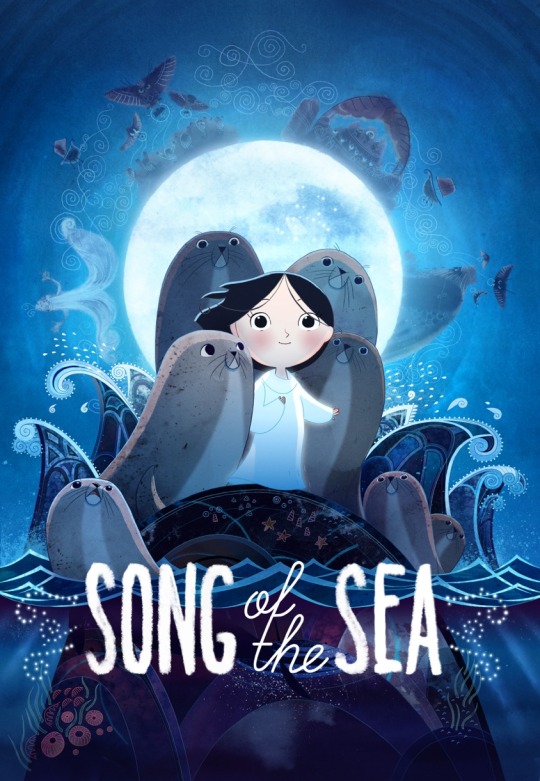
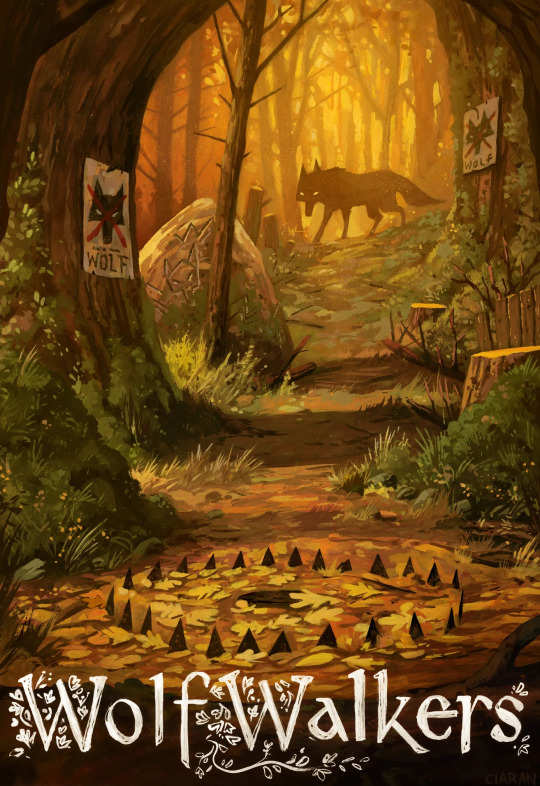
they dont get enough love
#the secret of kells#song of the sea#wolfwalkers#cartoon saloon#animation#movies#tuatha dé danann#aos sí#selkie#ireland#irish mythology#celts#celtic mythology#personal
2K notes
·
View notes
Text
the Aos Sí: Figures of Celtic Fae Lore
by Keziah
‘Aos sí’ is a term used to encompass a complex and powerful array of figures within Irish pagan theology and Celtic mythology, figures I sometimes refer to as the Otherworld Folk and Otherkin. You’ll hear them more commonly called the Sídhe, fairies/faeries/the fae, the Good Neighbors, the Folk, the Good Folk, daoine sídhe/daoine sìthe. There are no doubt countless terms and names used to mean the aos sí, and just as many theories as to who these figures are, where they come from, and what they do.
One of the most prevalent beliefs, which is mentioned in many Irish legends, is that the aos sí are (or are related to) the Tuatha dé Danann. Others have likened the aos sí to elves and faeries. In my opinion, it’s impossible to sum up who/what the aos sí are as the term could be applied to every kind of Otherworldly spirit and figure within the Celtic realm. I won’t be able to go over all of them within this piece (just for the sake of time), but I’ll do my best to go over a fair few of them.
What Does Aos Sí Mean?
The Irish term ‘aos sí’ (which is pronounced as aes [the ae sounding like a somewhat softer version of the ay in ‘way’] shee) means ‘the people from/of the mounds.’ These figures are more commonly referred to as sídhe nowadays, though sídhe/sí (sìth in Scots Gaelic) was once exclusively used to mean the burial mounds, tombs, and other such areas linked to the Otherworld that these figures were believed to reside beneath or within. The word has now come to bear two meanings, and its far better-known use is in reference to the figures themselves rather than the mounds with which they’re associated.
What Figures Are Classified as Aos Sí?
Bean Sídhe - Banshee
The term bean-sídhe (bean-sìth or ban-sìth in Scots Gaelic) means ‘faerie woman’ or ‘sídhe woman’ and therefore could (and once did) refer to any woman that hailed from the Otherworld. However, it’s now applied specifically to a spirit who heralds a forthcoming death, traditionally by way of blood-chilling wailing and moaning.
The banshee is usually described as having the appearance of either a withered hag or young woman of incomparable beauty. The former depiction has become the most recognized nowadays. The banshee is said to dress in either a white, gray, or black flowing robe or cloak and has a very pale white complexion with redness around the eyes from weeping so much. They’re usually described as having either heaps of black or fiery red hair. Some depictions tell of the banshee standing at an ‘inhumanly’ or ‘unnaturally’ tall height, others describe them as being of average human height, and still others portray the banshee as being short. On that, the Lady Wilde says in ‘Ancient Legends, Mystic Charms, and Superstitions of Ireland’ –
‘Though some accounts of her standing unnaturally tall are recorded, the majority of tales that describe her height state the banshee’s stature as short, anywhere between one foot and four feet. Her exceptional shortness often goes alongside the description of her as an old woman, though it may also be intended to emphasize her state as a fairy creature.’
In ‘the Memoirs of Ann, Lady Fanshawe’ an encounter that Lady Fanshawe had with a banshee is described –
‘There we stayed three nights, the first of which I was surprised at being laid in a chamber where, about one o’clock, I heard a voice that awaked me. I drew the curtain, and in the casement of the window I saw by the light of the moon a woman leaning into the window through the casement, in white, with red hair and ghastly complexion. She spake loud, and in a tone I never heard, thrice, “Ahone”; and then with a sigh more like wind than breath she vanishes, and to me her body looked more like a thick cloud than substance.’
Bean-Nighe - Washer at the Ford

'Les Lavandières de la Nuit' by Yan' Dargent; 1861
Bean-nighe is Scots Gaelic for ‘washerwoman’ and is used to describe a female wraith spirit or figure, often seen as a type of ban-sìth. In French lore, they’re known as les Lavandières (‘the Midnight Washerwomen’). She is another oracle of death, said to appear at the waterside of streams, rivers, or lakes to wash the bloodstained clothes of those soon to meet life’s end.
She is often described as being thin and frail-looking, dressed in green. Some lore states that she has webbed toes and red feet. Many believe the Washerwoman also has the power to impart great wisdom and secret knowledge to people, as well as the power to grant wishes if one dares to approach her and does so cautiously. However, others believe that approaching the Washerwoman and interrupting her work will result in her cursing you or injuring you by hitting you with her washing, which is said to strike so hard it can even break one’s bones. Some Irish and Scottish lore states that if you saw the Washerwoman before she saw you, you could ask her to foretell your future, as they have the gift of prophecy.
Though the bean-nighe are usually accepted as spirits and members of the Fae Folk, there are some other beliefs as to the origin of the Washerwomen. One such belief is that this is what becomes of the spirit of women who die prematurely during childbirth. Others say that to avoid becoming a bean-nighe after death, a woman must make sure that all her clothes have been washed and there was no dirty laundry left behind.
Most commonly the bean-nighe is associated with foretelling the deaths of warriors before battle, as she is apparently most often sighted at such times and with heaps of washing to do.
Dúlachán
The Irish dúlachán, dubhlachan, or dullahan, meaning 'the dark man,' is a male figure within the Fae Folk, a headless horseman whose steed is black as night. Some tales say he carries his head, face fixed with a horrifying grin, in his hand and some stories depict both the dúlachán and his steed as being headless. Other stories say he does not ride on horseback but drives the Death Coach – a black coach drawn by black horses (sometimes said to be headless themselves) that would go to collect the dead and take them from this realm to the Otherworld.

from Thomas Mayne Reid's 'the Headless Horseman;' 1865.
The dúlachán is said to use a whip made of bone, often described to be of human spine, and his clothes or cloak (or the covering of his coach bench in the version in which he drives the Death Coach) is allegedly made from human flesh.
It is said that the dúlachán riding by was a portend of one’s impending end; and sightings of the Death Coach are believed to foretell death. It is also believed that if the dúlachán utters someone’s name, they instantly die.
Ghillie Dubh
Ghillie Dubh or Ghillie Du is a figure from Scottish Highlands folklore, a faerie man believed to live (or to have lived) in a birch wood in the Northwest Highlands of Scotland, within the area of Gairloch and Loch a Druing, where he is said to have been spotted in the latter part of the 18th century.
He is described as being of small stature, having messy dark hair, and wearing clothes of moss, leaves and grass. It’s generally said that he was quiet, good-natured, and gentle. One tale states that he rescued a local child that had wandered into the woods and gotten lost, took care of the child for the night, and escorted her safely home the next morning. Many who lived in the area claimed to have seen Ghillie Dubh.
Unfortunately, Ghillie Dubh has not been spotted since shortly after he rescued the local child, when the laird, Sir Hector Mackenzie of Gairloch, invited a group of hunters to track and shoot kind-hearted Ghillie Dubh. As the tale goes, though the group searched all night, they never found Ghillie Dubh, and Ghillie Dubh was never seen in the area again.
Clúrachán
A relative of the leprechaun, the clurichaun (or clúrachán) is a solitary member of the Fae Folk known for his love of the drink. He’s said to steal from wine cellars, taverns, pubs, and breweries and is particularly hard to rid from such establishments. Even if the owner of such a place moved locations, the clurichaun could simply hide away in a barrel cask and go along for the ride.
They’re said to wear red clothes and fine shoes, and to carry a magical purse or pouch. Some tales say that the purse never runs out of money and will always be full. Other stories say that the purse contains a single shilling that will always return to the purse no matter how or where it was spent. They’re also said to be guardians of hidden treasure.

from T.C. Croker's 'Fairy Legends and Traditions of the South of Ireland;' 1825-1828
Such a figure has many names – the Cluricaune in County Cork, the Lugirgadaune in Tipperary, the Loughery Man in Ulster, and the Lurichaun or Luricaune in County Kerry.
Fear Dearg
The fear/fir dearg or far darrig (meaning ‘Red Man’ in Irish) is another faerie figure. These characters, sometimes called Rat Boys are most commonly described as being portly and hairy-skinned and having skinny tails and long snouts, like those of rats. Their preferred pastime is making mischief and pranking, though their idea of pranking is what mankind would see as horribly cruel, such as stealing babies and leaving changelings in their place.
Alp-Luachra - the Joint-Eater
The alp-luachra is a type of water sprite. Some lore describes it as being difficult to see or invisible, while other tales say that it could transform itself into a small newt and could be consumed when drinking water from a stream or spring. They would also wait for one to fall asleep beside such a water source, turn themselves into a newt, and then crawl stealthily into the mouth of the sleeping person.
If the alp-luachra was ingested one would suffer terrible stomach aches, hunger, and intestinal ailments, and they cannot put on weight.
To rid oneself of an alp-luachra, it is said one must eat an abundance of very salty food and take no water to wash it down or quench the thirst it will deliver. Some lore says that the alp-luachra will then fling itself from the sufferer’s body via the mouth. Other tales say that you must first lay down to sleep by a spring or stream. The alp-luachra will then crawl free from your mouth whilst you slumber. Otherwise, it will die of thirst in your body.
Cait-Sìth – the Faerie Cat
The Scottish cait-sìth or cat-sìth means ‘faerie cat’ and refers to a spectral figure that haunts the Scottish Highlands. It’s said to resemble a very large black cat with a white spot on its chest. Their size is said to be so big that they can be mistaken as being a large breed of dog.
It’s believed that when you spot a cait-sìth, it will arch its back and its hair will stand upright. It may also hiss or let out a low yowl. If that behavior isn’t enough to tell you to keep your distance, let this be – it is said that the cait-sìth has the power to take one’s soul. In fact, the belief that it is unlucky for a cat to pass over a corpse or recently filled grave is linked to the cait-sìth. In the Highlands, it was thought said cat may have been a cait-sìth in disguise, come to try and steal the soul of the deceased before any god could lay their claim.
It is also believed that the cait-sìth has the power to curse you and will do so if on Samhuinn night you do not leave a saucer of milk out for them as an offering. If you do, they’re said to bestow blessings upon the household.
While the name leads one to include this figure as being of the Fae Folk, there is some lore that states otherwise, saying that this spirit is actually a witch transfigured into the form of a cat.
Cù-Sìth – the Faerie Hound
The cù-sìth (Scots-Gaelic) or cú sídhe (Irish) is a faerie hound or Otherworldly hound. In Ireland, it’s said to dwell in cliffy, mountainous areas, where it can be found having made a den in the clefts of the rocks. In Scotland, they can be spotted in the Highland moors.
They’re described as being able to move in absolute silence, which aids them in hunting, something they’re said to be quite good at. When they do bark, they bark three times and the barks are exceptionally loud, so loud that they can be heard from miles and miles away. Those who hear the barks must reach safety by the third bark, else they will die of fear.
The cù-sìth is said to have a shaggy coat of fur, which is often described as being dark green in color, and they, like the cait-sìth, are much larger than their counterparts of our own realm. The cù-sìth has been described as being as big as a cow.
Ci Annwn
The above mentioned cù-sìth is not unlike the Welsh Ci Annwn (‘Hound of Annwn’). Annwn is the Welsh Otherworld, ruled over first by Arawn and later by Gwyn ap Nudd, the King of the Fair Folk.
The Ci Annwn (Cŵn Annwn when pluralized) is a huge, white spectral hound with red ears and is believed to be a portend of death. It’s said to see one, especially to see one headed your way, means that death is to come.
These dogs are said to hunt near and on the mountain Cader Idris/Cadair Idris in County Meirionnydd. If you’re in that area and you hear the howling of Annwn’s hounds, your death has been foretold.
the Tuatha dé Danann
Many people count the Tuatha dé Danann as a whole among the aos sí, some see specific members of the Tuatha dé Danann as befitting of the modern understanding and use of the term the Sídhe, and others would describe the Tuatha dé Danann as the forefathers of the aos sí, seeing the aos sí as descendants of this mighty tribe. There is so very much that we could explore with the Tuatha dé Danann, their ascendancy to power and their reign over Ireland, their rivals, their many deeds and adventures, but I promise I will write a separate piece dedicated to a more thorough look at the Tuath Dé. For this blog, I’m going to try and keep it short and sweet and give a general explanation and idea of who they are.
Tuatha dé Danann means ‘the People of Danu’ or ‘the Tribe of the Goddess Danu’ – Danu being an Irish ancestral goddess sometimes depicted as an earth goddess and sometimes associated with the goddess Anu. The Tuatha dé Danann are an incredibly powerful Irish tribe of deities. They’re also called the Tuath Dé, meaning ‘the Tribe of Gods’. Most commonly, they’re seen as gods and goddesses. Some, though, think them spirits, and others see them as mythological representations of ancient kings and queens of Ireland.
According to the Lebor Gabála Érenn, the Tuatha dé Danann came to Ireland in dark clouds that moved over the land and descended upon Sliabh an Iarainn in Connacht. The ‘dark clouds’ are interpreted as describing the clouds of smoke that billowed up from the ships that the Tuatha dé Danann traveled to Ireland in, ships which, according to legend, the tribe set aflame in order to prevent themselves from being tempted to leave this land they had newly come to. Eventually they ascended to rule over Ireland, a reign that met its end after a lengthy conflict with the Milesians (who are often interpreted to represent the Celts, the Irish people, and the Christianization of Ireland or the establishment of a ‘post-pagan’ idea of Ireland).
The Tuatha dé Danann are said to now reside within and rule over the Otherworld, their agreed upon place of dwelling in the terms laid out in a treaty with the Milesians. The Tuath Dé are still known, however, to walk among the living and influence the lives and affairs of those within our own realm.
While I would love to describe and explore the individual members of the Tuatha dé Danann, I don’t want this section to become incredibly long and painfully out of balance with the rest of this piece. I’ll instead touch on a few figures perhaps most heavily associated with the Fae Folk or with the more modern understanding of the Sídhe.
Clíodhna
Heroine, goddess, and faerie queen.
Said to be the most beautiful woman in the world.
Goddess of beauty and love; patron goddess of County Cork.
Goddess of sovereignty in Munster.
Reigns as queen over all the faerie women of South Munster.
Has three birds whose magical songs have healing powers.
Served as banshee (foretelling the deaths of the members of the house and clan) to the MacCarthys.
Was the faerie lover of Ciabhán, John Fitzjames, Earl Gerald Fitzgerald, and Caomh.
Also called Clídna the Fair, Queen of the Banshees, the Faerie Queen, the Faerie Queen of Munster.
Badb
Ancient shape-shifting goddess, death-bringer, and war fury.
Goddess of war, battle, madness, death, and prophecy.
Associated with banshees.
Associated with the cry and song of crows.
Also called Badb Catha (‘the Battle Crow’).
Macha
Goddess of sovereignty of Ireland (particularly within Ulster), thus associated with the land, fertility, guardianship, and the selecting of kings.
Associated with horses.
Sometimes described as a goddess of war and battle.
Associated with warriors on horse-back or warriors who used chariots.
Considered a ‘faerie lover’ or ‘faerie wife’ in her tale with the farmer Cruinniuc.
Mór-Ríoghain or the Morrígan
One of the best-known and most revered (and feared) Irish goddesses.
A shape-shifting goddess of war, battle, death, victory, and fate.
She’s also seen as a goddess of magic and an oracle, and many magical practitioners devote themselves to the Morrígan or seek her matronage in their work.
Also called the Phantom Queen, the Death Queen, and the Great Queen.
Note: There is some debate surrounding the figures of Badb, Macha, and Mór-Ríoghain, which have been called as a collective trio the Three Mórrígna. Some see each as an individual goddess on her own, though related to one another as sisters. Then there are those who see the goddesses as being three sides of one goddess, an idea that has been popularized especially within Celtic Neopagan, Wiccan, and Neo-Druidic schools of thought.
Sources and Further Reading: ‘Ancient Legends, Mystic Charms, and Superstitions of Ireland’ – Wilde, Lady Jane ‘Beside the Fire: A Collection of Irish Gaelic Folk Stories’ – Hyde, Douglas ‘Encyclopedia of Celtic Mythology and Folklore’ – Monaghan, Patricia ‘the Great Queens: Irish Goddesses from the Morrígan to Cathleen Ní Houlihan’ – Clark, Rosalind ‘Gods and Fighting Men: the Story of the Tuatha De Danann and of the Fianna of Ireland’ – Gregory, Lady Augusta the Irish Pagan School – www.irishpaganschool.com ‘Lebor Gabála Érenn: the Book of the Taking of Ireland’ -MacAlister, R.A. Stewart Lora O’Brien – www.loraobrien.ie ‘the Memoirs of Ann, Lady Fanshawe’ – Fanshawe, Herbert Charles
#irish mythology#celtic mythology#sheydmade mythology#scottish mythology#aos sí#bean-sídhe#fae folk#sidhe#Bean-nighe#les Lavandières#dullahan#ghillie du#clúrachán#fear dearg#alp-luachra#cait-sìth#cù-sìth#Ci Annwn#Cŵn Annwn#welsh mythology#tuatha de danann#sheymade-themorrigan#sheydmade-cliodhna#sheydmade-badb#sheydmade-macha
5 notes
·
View notes
Text



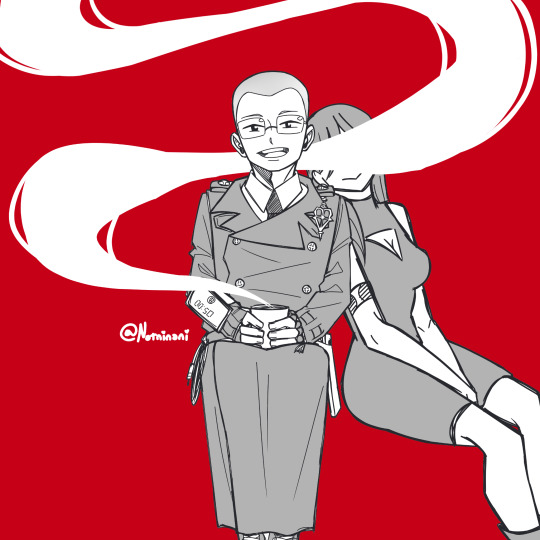
young and restless
#TERMINÉ LOS 4#y los posteo de nuevo porque sí#tqm siames#blue exorcist#ao no exorcist#aoex#rin okumura#bonrin#ryuuji suguro#sugurin#bonrin au#izumo kamiki#勝燐#shiemi moriyama#yukio okumura#renzou shima#yukishima#konekomaru miwa#si koneko es el unico casado#shiezumo#Do you know how cats walk? AU
1K notes
·
View notes
Text

[OC/FAE] "Pray, sweet girl, wouldst thou cometh closer?"
1K notes
·
View notes
Text

L'host dels Sídhe, per Aelin Laer. [font]
#art#pintura#fadenc#Tuatha Dé Danann#Aos Sí#Aes Sídhe#mitologia#mitologia celta#mitologia irlandesa#mitologia europea#Gent blanca
4 notes
·
View notes
Text
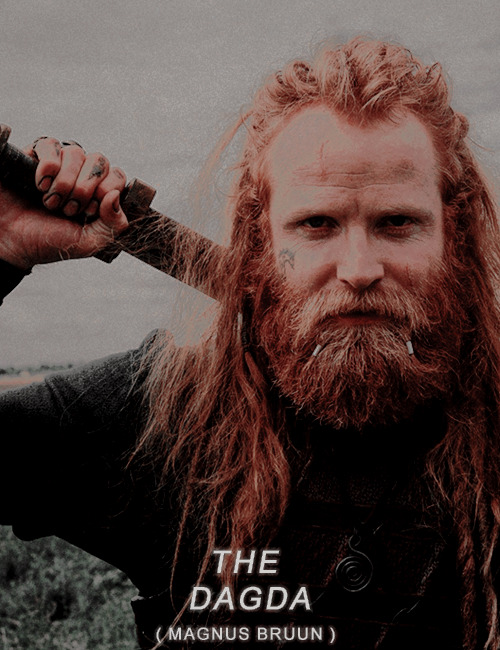
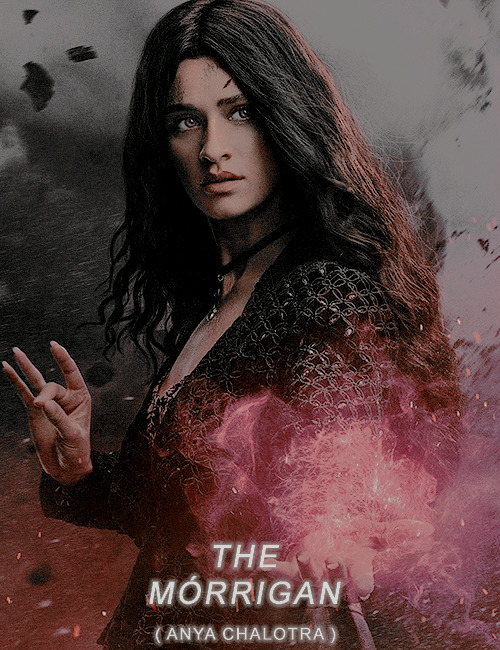

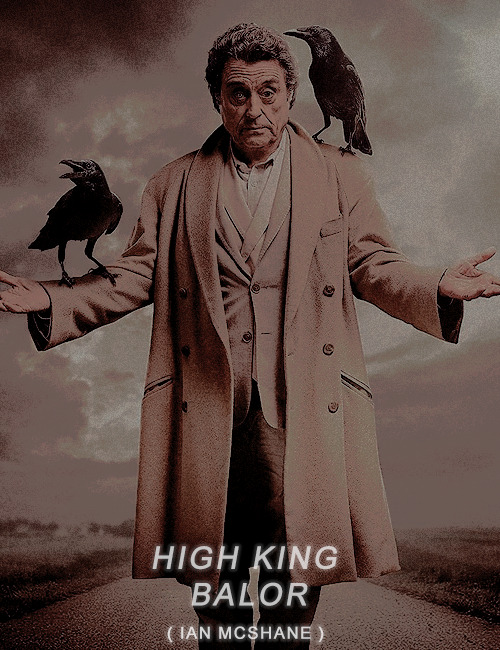
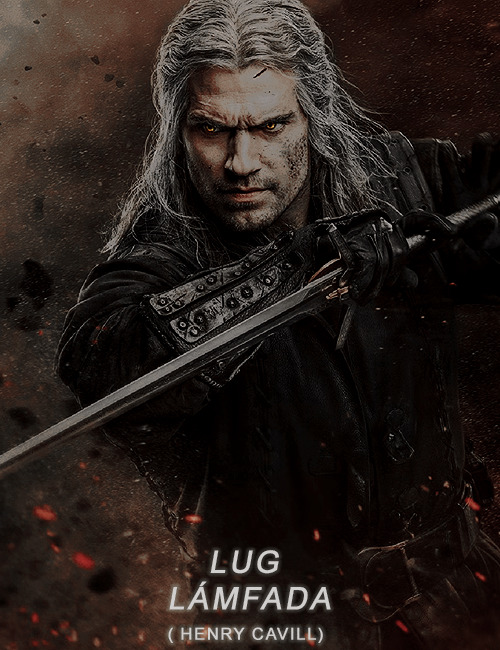

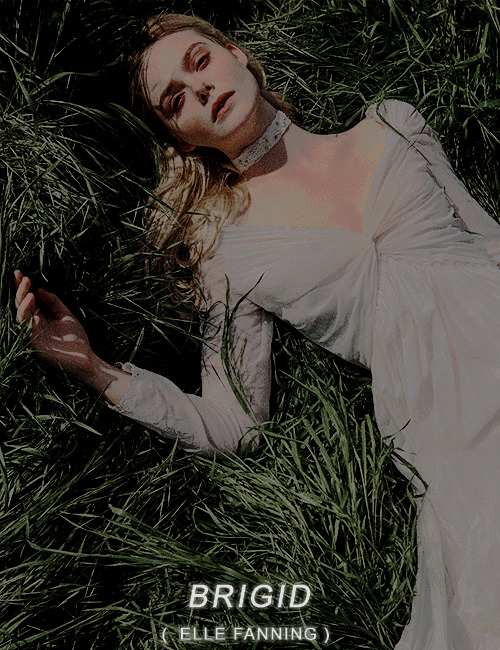
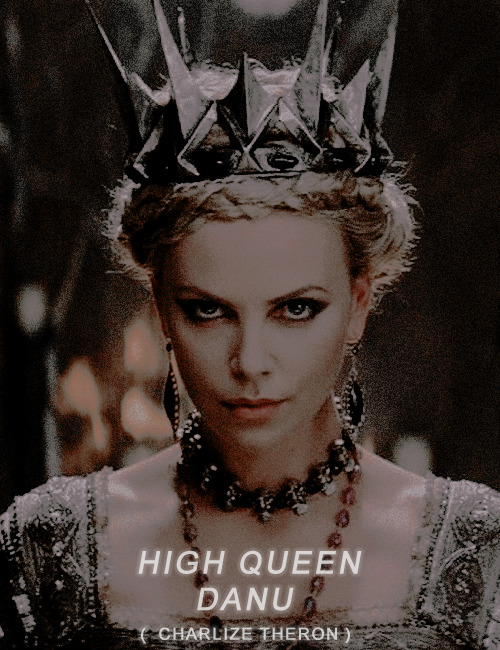
THE GODS OF THE SEELIE COURT & THEIR FCs // pt. 1
Balor - High King / Leader of the Fomorians/enemies of the Tuatha dé Danann
FC: Ian McShane from American Gods
Territory: all of Dubnos - AKA “the Hells”
Manannán mac Lir - Warrior King / God of the sea
FC: Jason Mamoa
Territory: Mag Mell & Emain Ablach ( island paradise of the Otherworld )
Aengus - God of youth, summer, love, and poetry
FC: Aneurin Barnard
Territory: Tír na nÓg
The Dagda - Chief/General of the gods
FC: Magnus Bruun Nielsen from The Last Kingdom
Territory: Mag Mell - land of greatness achieved through honorable death in battle
The Morrígan - Goddess Queen of war, magic, & death
FC: Anya Chalotra from The Witcher (main) Linda Cardellini (alt)
Territory: Mag Mell - land of greatness achieved through honorable death in battle
Lugh - Warrior King & God of the sun & arts
FC: Henry Cavill from The Witcher
Territory: Mag Mell - land of greatness achieved through honorable death in battle
Danu - High Queen of the faeries / head of the Tuatha dé Danann ( the people/children of the goddess Danu)
FC: Charlize Theron from Snow White and The Huntsman
Territory: all of Albios - AKA “the Heavens”
Brigid - Goddess of Healing, Fertility & Protection
FC: Elle Fanning from Sleeping Beauty
Terriroty: Tír na nÓg - paradise / “the land of youth, health, and beauty”
#the mórrigan. | fae queen of war & magic *#the dagda. | the druid king of war *#lugh tag tbh#canon & lore. | the fae *#canon. | world lore *#canon. | the seelie court *#canon. | the aos sí *#canon. | the otherworld *#i should make tags for all of them but nah#too much work atm lol#ooc. | * edits and art !#canon. | gods & goddesses *
18 notes
·
View notes